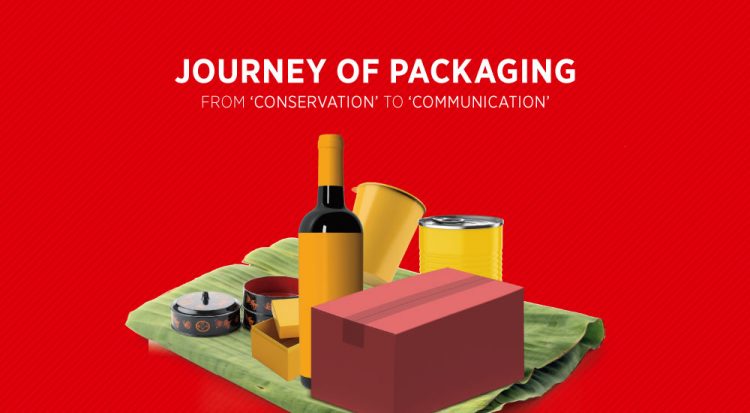
The packaging industry is one the oldest industries that has been around since the beginning of man. Early man used vessels and containers made of natural materials in form of leaves, nuts or gourds, bamboo, coconut shells animal skin, wood as a packaging material for transporting, storing, and protecting food and tool related items.
The History of Packaging begins with package, contain, protect, and transport food and tools but the modern packaging is all about significant attempts to make packaging attractive. With the advancements in technology we even see new substrates and packaging shapes in plethora of designs and dimensions.
Packaging began approximately 5000 BC – 3500 BC in the age of hunters and gatherers where very early in time, food was consumed where it was found locally so there was no need for packaging. But as the civilizations grew, the need to contain, protect, and transport of food supplies became really demanding. People started using woven sacks and baskets made from a variety of plants, wooden boxes and crates to store and protect crops and food for the winter.
The industrial revolution was, perhaps, the most important event in the history of packaging transformation with the products began to be produced by machines, instead of manual operations in a more efficient manner than ever before. Nicholas Appert known as the Father of Canning devised a method to preserve foodstuffs. This era saw a series of remarkable innovations like printing press, folding cartons, molded glass, and cellophane that played huge role in shaping todays packaging trends. In mid-19th century the inventions of plastics like polyethylene and propylene and Eckert and Ziegler patented first commercial modern plastics injection molding machine, plastics became everyone’s favourite. Tetra Pack invented by Erik Wallenberg in 1951 entirely changed the food and liquid packaging format that even exists today. Amongst all these industrial developments Michigan State University - School of Packaging became the first institution to establish a School of Packaging in 1952 to promote the packaging knowledge in the entire world.
In last couple of decades, advancements in digital technologies , personal computing, and mobiles have tremendously transformed consumer behavior and thus their rapid changing expectations has brought the competition in packaging to the pinnacle. Now a days branding and packaging have become essential to market the products because every brand tries to influence the consumer choices to take decisions in favor of their products focusing on the fact that packaging has become a silent salesman.
The latest trends in the packaging industry emphasize on concepts that are in harmony with nature and have minimal impact on the environment. I strongly feel there should the focus to be shifted from convention packaging to sustainable and green packaging. Now the industry is also opting for sustainable methods, so there is less wastage and lower carbon footprint, more recyclability and more possibilities of reusability.







Comments
Packaging save the goods from
Packaging save the goods from waste .
Yes, Packaging saves the
Yes, Packaging saves the goods from waste.
Also packaging plays a crucial role in protection of all sorts of products from environmental and transit hazards
In reply to Packaging save the goods from by Pratik Suman (not verified)
Its great and I think we can
Its great and I think we can learn a lot from the history to design environment friendly packaging solutions
Now we are at the stage where
Now we are at the stage where we have variety of packaging materials both natural and man made. The need of the hour I believe is to understand and act where needed to reduce the packaging waste. Identify those materials which need to be made obsolete. Care more and think for the environment before every new packaging material is introduced. There is a bigger picture which needs to be taken every time we develop or make a material obsolete.